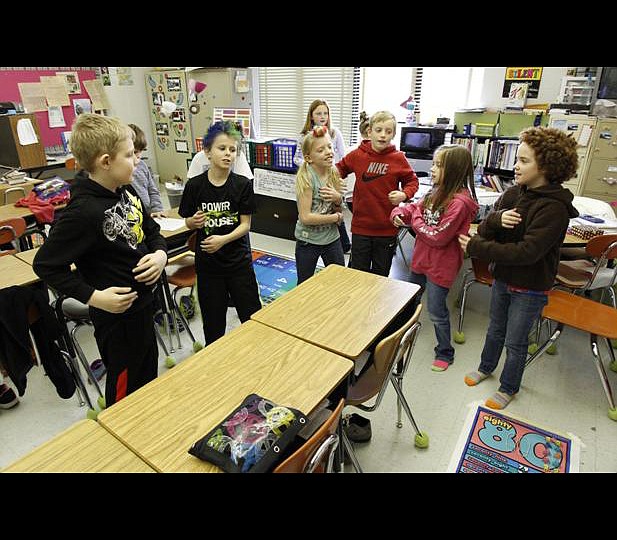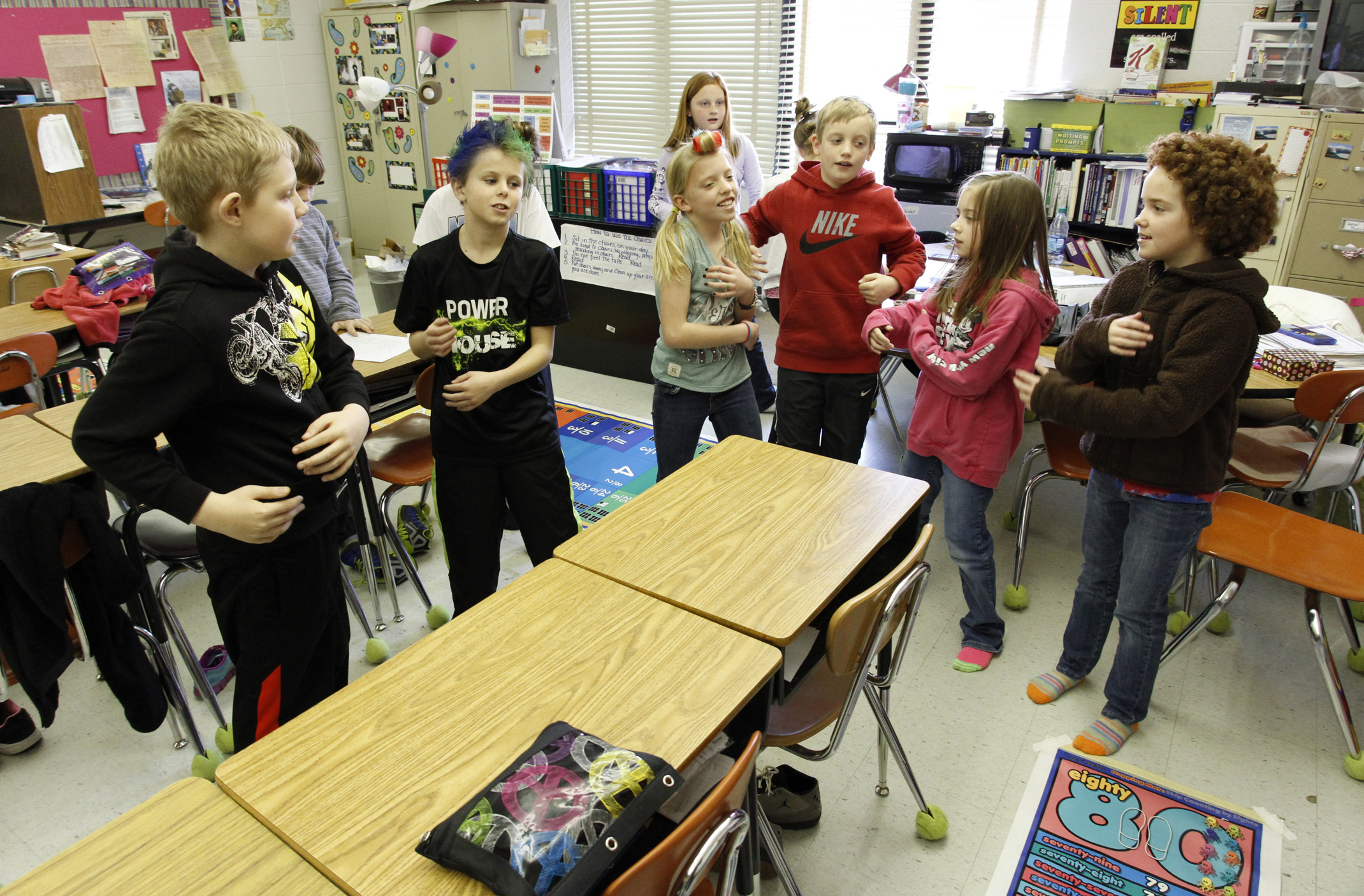Rather than sitting still at their desks, students at McConnell Elementary School are hopping and skipping across colorful mats. Some groups are clapping, whispering and yelling. Others bend, twist and reach their arms from their toes to their heads.
At first glance, the lesson looks like an aerobics class. But it's actually a new way of teaching math, called "Math and Movement," in which teachers say they can achieve two goals: keep kids physically active while teaching and reinforcing math concepts in a new way.
And locally the program is gaining ground.
McConnell teacher Kristy Kimball introduced Math and Movement at another school two years ago. It's now expanded from one classroom to five schools as more teachers have jumped on board and grant funding has been made available. And if pilot tests show continued results, school officials hope eventually to roll out the program to all Hamilton County elementary schools that want it.
Large mats help kids learn decimals, fractions, time, multiplication and place values. Kids practice multiples of eight by hopping on the mats landing on every eighth number. Across the room, others explore mixed numbers and fractions by stretching across a mat.
Aside from the obvious benefits of physical activity, Kimball says the lessons help math concepts stick by allowing kids to touch, feel and verbalize math problems. And students who may struggle with the sit-still approach of worksheets and books are more involved and enthusiastic about math.
"It helps them to see, to visualize it and to walk on the mats," Kimball said. "They get excited about it. They love doing it."
The physical activity stimulates their brains, keeping kids more energized and awake throughout the day.
"It's not just a simplistic, 'Kids, get up and dance,'" said Russell Cliche, the county's director of Coordinated School Health, a statewide program designed to address health concerns in schools. "The key to this is the activity ... [is] always challenging the left and the right brain."
Cliche said the program boosts academic performance and also helps combat childhood obesity, diabetes and other health ailments that increasingly plague children. That piece alone is viewed as a huge improvement -- McConnell fourth-graders have physical education class only once a week for about 40 minutes.
The cost of materials so far has been funded by Coordinated School Health and small grants from businesses and community groups.
In a small study at McConnell and Spring Creek Elementary, most students showed gains on pre- and post-tests after completing four weeks of Math and Movement activities. Teachers will use this semester and the fall semester to replicate their investigation on a larger scale.
The Math and Movement mats are being used in more than 1,000 schools across the country. Founder Suzie Koontz said they are proving especially important for this generation of children, who have grown up knowing only sedentary lifestyles.
"If they don't use movement, the students are not going to increase their level of learning. The standard approach of sit down, be still, be quiet is really losing the students," Koontz said.

